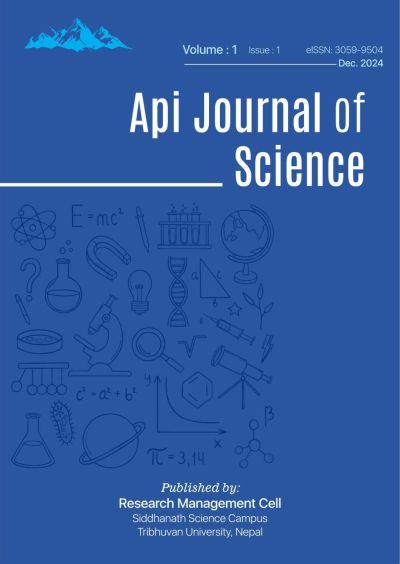Hydrogen Bonding and Reactivity Behavior of Guanosine-5′ -Diphosphate from DFT and Molecular Docking Approach
DOI:
https://doi.org/10.3126/ajs.v1i1.75494Keywords:
Guanosine-5′ -Diphosphate (GDP), MEP, DFT, Molecular Docking, Global Reactivity DescriptorAbstract
Minimum energy structure of Guanosine-5′-Diphosphate (GDP) has been obtained from DFT-B3LYP/6-311++G(d,p) level of theory. The intermolecular hydrogen bonding possibility of GDP has been predicted from optimized parameters, MEP surface analysis and molecular docking approach. The hyper conjugative interaction energy has been analyzed from NBO approach and the significant interaction energy for stability of the molecule is the delocalization of lone pair electron η (1) C21→ π*(N18‒C30) and yields 271.82 kcal/mol energy. For the ligand protein interaction, the protein Cdc42 is predicted for the ligand GDP and the three PDB codes 1ANO, 1A4R and 1DOA has been taken into consideration. The Inhibition constant for 1DOA is least which emphases the most binding energy -7.2 kcal/mol. The MEP surface analysis exhibits the most negative potential across O31 and N20 whereas the positive potential cloud is seen across the hydroxyl groups (O8-H9, O3-H4, O35-H36) and amine groups (N26-H2, N23-H). These regions have significant roles in hydrogen bonding which is satisfied from the molecular docking approach.
Downloads
Downloads
Published
How to Cite
Issue
Section
License
Copyright (c) 2024 RMC, Siddhanath Science Campus

This work is licensed under a Creative Commons Attribution-NonCommercial 4.0 International License.
This license enables reusers to distribute, remix, adapt, and build upon the material in any medium or format for noncommercial purposes only, and only so long as attribution is given to the creator.




